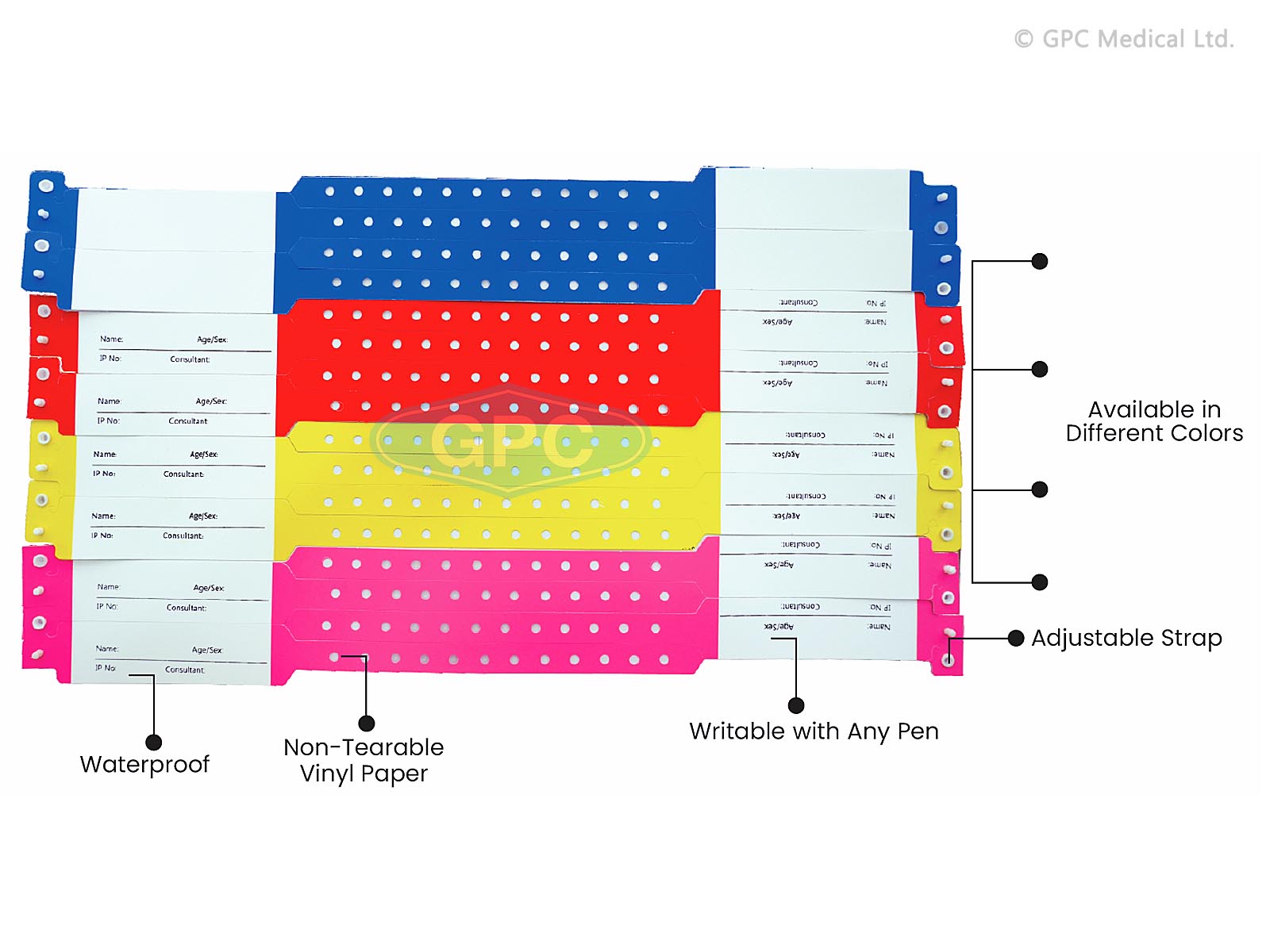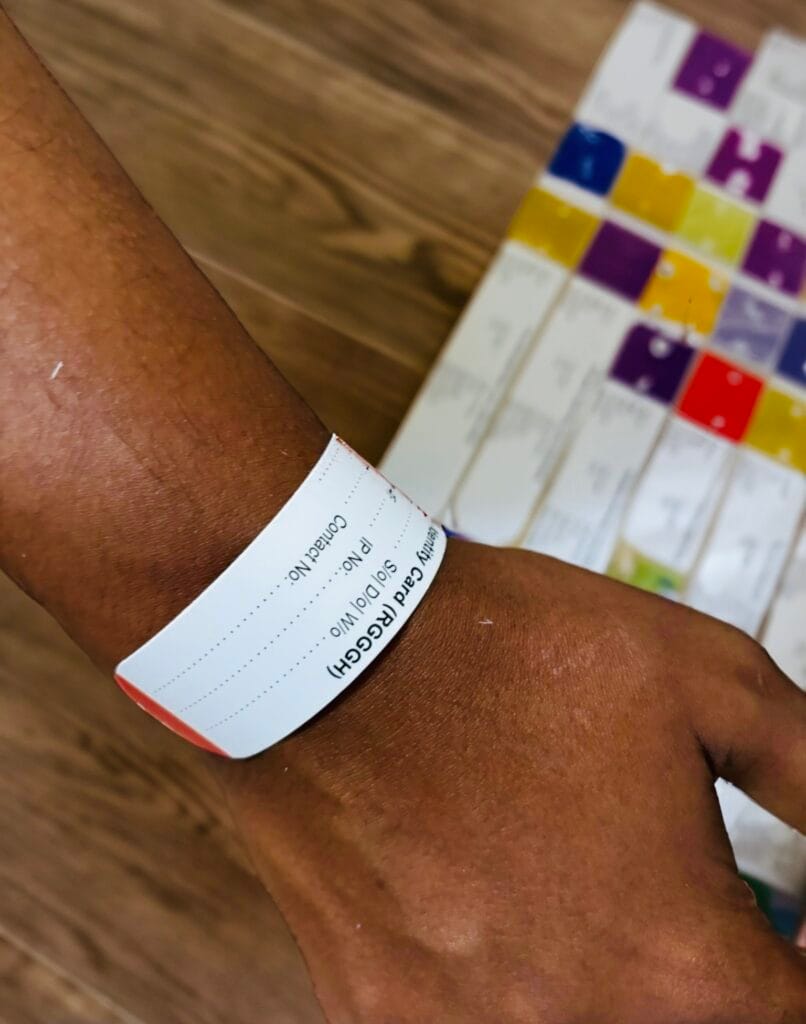The Growing Value of Patient Identification Band in Modern Medical Care
Individual Recognition Bands: A Key Device for Improved Medical Precision
Client recognition bands represent an important element in the quest of medical accuracy and client security within health care atmospheres. The real degree of their effect on individual outcomes and total medical care high quality warrants better examination.

Value of Person Recognition
Client recognition is a critical component of medical care that guarantees the safety and precision of clinical therapy. Correct recognition procedures are vital to prevent medical errors, which can cause negative individual end results, including incorrect drug management, misdiagnosis, or inappropriate therapy plans. The importance of accurate person recognition can not be overstated, as it acts as the structure for effective interaction among health care carriers.
In environments where multiple clients are obtaining therapy simultaneously, the risk of identification confusion increases. Executing robust recognition systems assists alleviate these risks and enhances patient safety. Patient Identification Band. Exact recognition adds to the stability of clinical records, guaranteeing that individual histories, allergic reactions, and previous treatments are properly linked to the ideal individual.
Moreover, compliance with governing standards and accreditation demands commonly mandates strict patient identification protocols, promoting a society of accountability and high quality care. Eventually, the value of person recognition transcends plain administrative tasks; it is an essential element of delivering high-quality medical care that focuses on client safety and security and enhances clinical end results. Purchasing effective identification methods is not just helpful-- it's crucial in today's complicated medical care landscape.
Kinds Of Client Recognition Bands
In healthcare setups, different kinds of individual recognition bands are used to make certain precise recognition and improve security. These bands work as an essential tool in preventing medical errors associated with individual misidentification.
The most usual kind is the common wristband, usually made of resilient plastic and published with the client's name, day of birth, and an unique recognition number. These wristbands are frequently color-coded to share details details, such as allergies or other clinical problems.
One more type is the barcode wristband, which integrates a scannable barcode connected to the person's digital wellness document. This modern technology enables efficient data access and verification throughout medicine administration and other scientific processes.
Furthermore, RFID (Superhigh Frequency Identification) bands are coming to be increasingly preferred. These bands can interact wirelessly with medical facility systems, enabling for real-time tracking and recognition of people, thereby enhancing and enhancing process patient safety.

Advantages for Health Care Companies
Utilizing individual identification bands provides significant benefits for health care companies, improving both functional performance and person security. These bands function as an essential device in simplifying person management processes (Patient Identification Band). By making sure exact identification, doctor can decrease the risk of administrative errors, such as mislabeling examples or misdirecting therapies, which can bring about costly hold-ups and complications
Moreover, individual recognition bands help with smooth interaction among the medical care group. With easily easily accessible and standardized client info, carriers can make educated choices swiftly, improving total process. This efficiency is especially important in high-pressure environments such as emergency situation departments, where time-sensitive interventions are crucial.
The execution of identification bands also supports conformity with governing criteria and finest methods, therefore minimizing the danger of legal consequences stemming from identification errors. Furthermore, using these bands enhances information accuracy in electronic health records, bring about much better care control and connection.
Influence On Person Safety
Precise client identification is a keystone of medical care safety and security, significantly lowering the possibility of mistakes that can endanger click for source person well-being. The usage of individual recognition bands is important in making certain that each client obtains the right therapy, drugs, and procedures. These bands function as a trustworthy recommendation factor for healthcare specialists, decreasing the risk of misidentification, which can that site cause severe repercussions such as incorrect drug administration or medical mistakes.
The implementation of standardized patient identification bands adds to a society of safety and security within health care setups. By giving clear, quickly readable info, these bands assistance to reinforce the value of confirming individual identification at every phase of care. Moreover, they help with interaction among team members, ensuring that everyone entailed in an individual's treatment knows their particular demands and requirements.
On top of that, using patient identification bands can enhance the accuracy of digital wellness documents, better decreasing the potential for mistakes - Patient Identification Band. By prioritizing individual security via efficient identification techniques, doctor can foster count on and confidence among individuals, inevitably resulting in much better scientific outcomes and improved patient contentment. The effect of proper client identification can not be overstated; it is an essential element of top quality health care shipment
Ideal Practices for Implementation
Reliable implementation of patient recognition bands is crucial for enhancing patient safety and security and lessening errors in healthcare setups. Personnel training is essential; all team participants need to understand the relevance of accurate individual recognition and the procedures for band application.
Second, the design of the recognition bands should prioritize exposure and toughness. Bands should be easy to review, contain vital person info, and endure everyday wear. Making use of color-coding can better enhance quick recognition.


Third, integrating digital health documents (EHR) with recognition band systems can enhance operations. Automated signals for inconsistencies in patient identification can prevent prospective errors prior to they take place.
Finally, conducting regular audits and comments sessions will certainly aid identify locations for renovation. Engaging personnel in these conversations fosters a culture of security and liability.
Verdict
In final thought, patient recognition bands play a vital role in improving clinical accuracy and making certain client safety and security within medical care systems. Embracing ideal methods for implementation fosters Bonuses a culture of security, ultimately leading to boosted client end results and greater trust fund in medical care solutions.
Patient recognition bands represent an important element in the quest of medical accuracy and client safety within medical care environments.Utilizing client recognition bands provides significant benefits for health care carriers, improving both functional efficiency and patient security. By focusing on patient safety and security via reliable identification methods, health care carriers can promote trust fund and self-confidence amongst patients, ultimately leading to much better professional outcomes and enhanced client contentment.Reliable implementation of client identification bands is vital for enhancing individual safety and reducing mistakes in medical care settings.In conclusion, patient identification bands play a crucial function in enhancing clinical precision and making sure client safety within healthcare systems.